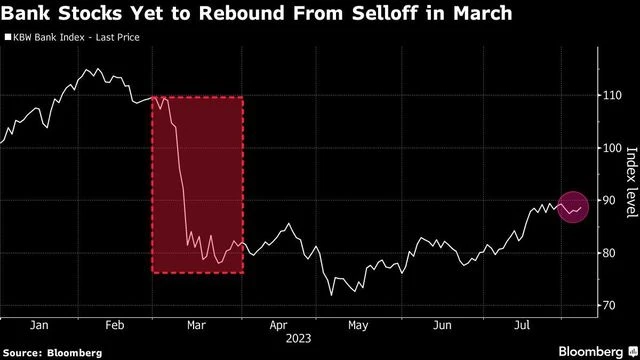[ad_1]
Moody’s Investors Service lowered credit ratings for 10 small and midsize US banks and said it may downgrade major lenders including US Bancorp, Bank of New York Mellon Corp., State Street Corp., and Truist Financial Corp. as part of a sweeping look at mounting pressures on the industry.
Higher funding costs, potential regulatory capital weaknesses and rising risks tied to commercial real estate loans amid weakening demand for office space are among strains prompting the review, Moody’s said in a spree of notes late Monday.
“Collectively, these three developments have lowered the credit profile of a number of US banks, though not all banks equally,” it wrote in some of the assessments.
Firms that had ratings cut included M&T Bank Corp., Webster Financial Corp., BOK Financial Corp., Old National Bancorp, Pinnacle Financial Partners Inc., and Fulton Financial Corp.
And Moody’s adopted a “negative” outlook for 11 lenders including PNC Financial Services Group, Capital One Financial Corp., Citizens Financial Group Inc., Fifth Third Bancorp, Regions Financial Corp., Ally Financial Inc., Bank OZK and Huntington Bancshares Inc.
Investors, rattled by the collapse of a regional banks in California and New York this year, have been watching closely for signs of stress in the industry as rising interest rates force firms to pay more for deposits and bump up the cost of funding from alternative sources. At the same time, those higher rates are eroding the value of banks’ assets and making it harder for commercial real estate borrowers to refinance their debts, potentially weakening lenders’ balance sheets.
)
Banks that depend on more concentrated or higher levels of uninsured deposits are more exposed to these pressures, especially banks with high levels of fixed-rate securities and loans.
[ad_2]
Source link

